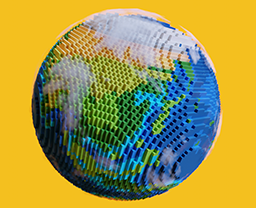
Computer Vision

Image Classification
Object Detection

Object Tracking

Semantic Segmentation

Instance Segmentation
What Is Computer Vision?
Computer vision branches out from the field of artificial intelligence, giving computers and systems the ability to interpret information from digital assets, including images, videos, and other visual inputs. After analyzing the data, the computer or system can take action or recommend action depending on the information received. Computer vision allows the technology to see the information, observe it, understand it, take action, or help the user take action.
Computer vision trains a computer to see as a human can, except on a larger scale. The system can be trained for services such as product inspection and can examine hundreds or thousands of products or processes and find issues within them. Computer vision is utilized in energy, utilities, manufacturing, and the automotive industry.
The History Of Computer Vision
Computer vision has a shared history with artificial intelligence in the 1950s, where researchers were optimistic that this technology could transform the world and how we approach it. The Dartmouth Conference in 1956 was a huge start in this optimism. However, the father of computer vision, Larry Roberts, got started this specific field by suggesting that a computer could extract geometrical information from 2D perspective views of blocks.
Taking this a step further was David Marr, who recognized that it was essential for computers to recognize images from the real world. He described low-level vision tasks using a bottom-up approach for the computer to understand. As this approach was limited, top-down recognition was proposed. Computer vision began to see its purpose, and with the foundation, many of the types we see in computer vision today began to take shape. This included image processing, photogrammetry, object tracking, object detection, and more. The endless applications in autonomous navigation and robotic assembly flourished with it, making computer vision a mainstay in the technology industry.
Types Of Computer Vision
Image Classification
This type of vision allows the computer to classify images into distinct categories. Using examples of an image class, you can expand the computer learning algorithms, and it will accumulate the knowledge and appropriately classify your images.
Object Detection
To get this vision going, you need to input boxes and labels for individual aspects of images, so the computer can use classification and localization for the objects and images you have inputted into it. At that point, the computer can identify these aspects regardless of where those images are in a setting.
Object Tracking
This process is where the computer will follow the objects or multiple objects that you program it to follow. It is commonly seen in video or real-world interactions, or where the computer makes the observations after initially detecting the object.
Semantic Segmentation
This segmentation is where the computer tries to understand the role of each pixel in each image. The computer will be able to delineate the boundaries of each object in the image, such as roads, cars and trees.
Instance Segmentation
Computer vision is applied to different labels of classes, such as labelling five guitars using five different colours so they can be sorted. The key is the computer can identify each object instance for every known object within the image. In this instance, it would be the colours of the guitars.
How Does Computer Vision Help My Business?
Computer vision allows your business to operate with a higher velocity with faster and simpler processes, saving your employees from the monotony and automating their workflows/tasks while improving your product control and services.
How Can LT3 Implement Computer Vision?
At LT3 ATG, streamlining through technology is one of our many specialties. We have designed full computer vision systems to make our clients’ lives easier in the environment and recycling industry. Want to be our next success story? Book your consultation today!
Computer Vision
Related Services
Related Articles
No related articles at the moment
Related Projects
Check out our other projects →LT3 ATG
Ready to get started?
Building your vision starts with a conversation. We're always happy to chat.














